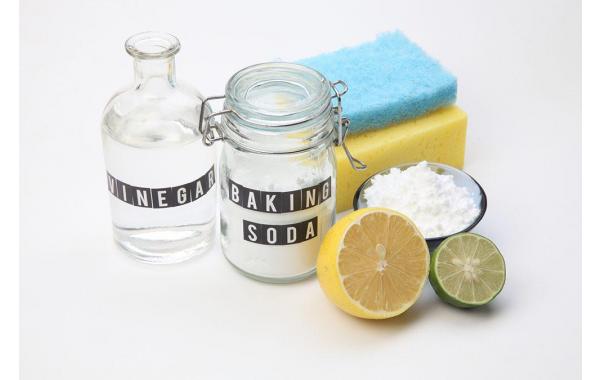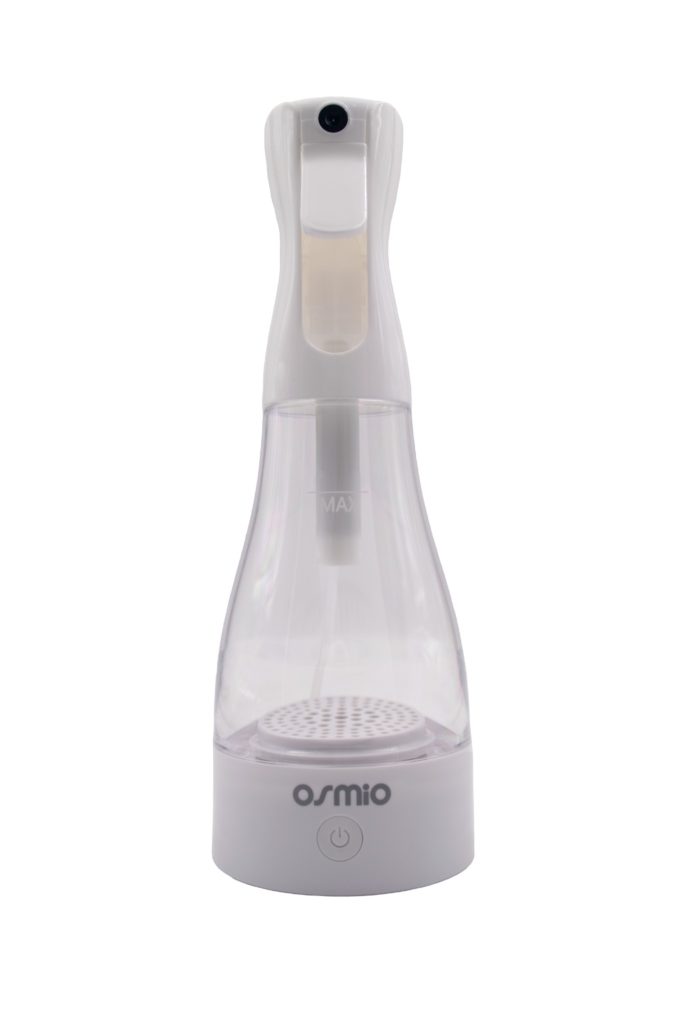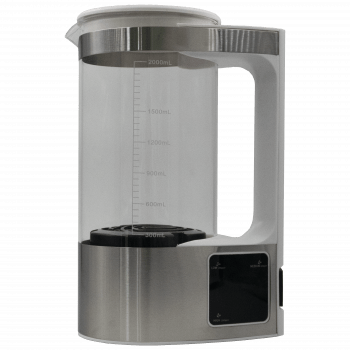Go clean - stay green
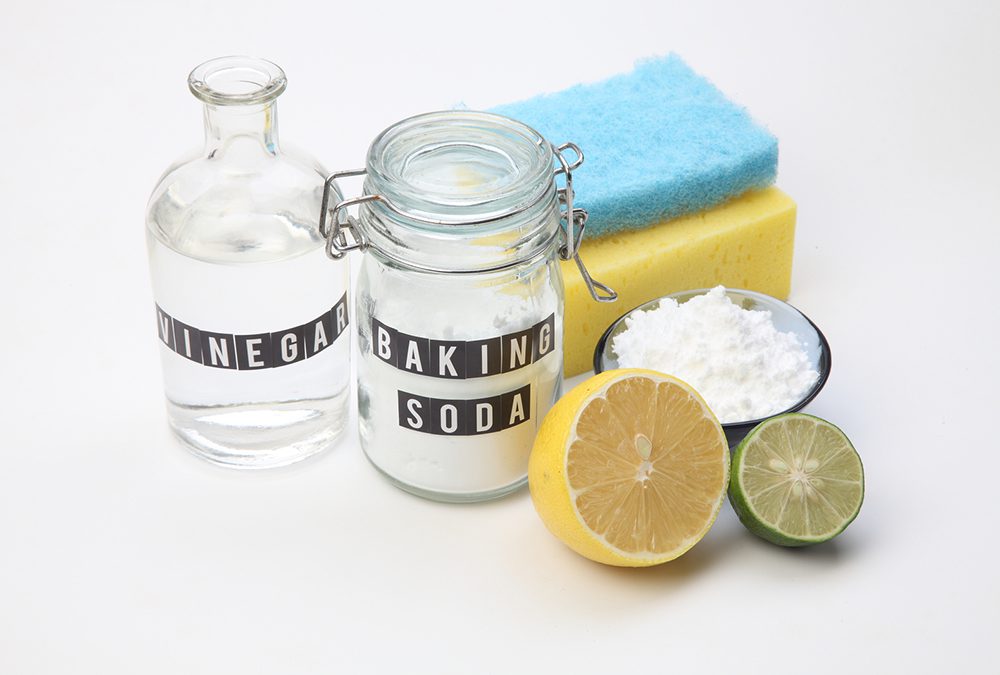
We all like it when our home is clean and fresh. I spend a great amount of time taking care of my home and in the past used a variety of cleaning products. Every household has their favorites, and I am no exception. However, I have swapped all of them for nine simple ingredients and now making DIY cleaners for every purpose. It takes little time and effort, and it is worth it. There are three good reasons why we should look into limiting the number of chemicals we use, our Health, the Planet and Money.
Eco-friendly cleaning products can save our

The average person comes in contact with a large number of chemicals every day. Various research has highlighted it can be from 500 to a few thousand. A large portion of them is hidden in our cleaning cupboards and personal hygiene products. The average household cleaning set contains 100-120 declared ingredients. At least half of these are toxic. We are exposed to them routinely – from the phthalates in synthetic fragrances to the noxious fumes in stronger cleaners. The great deception is – it is safe because it comes from a supermarket. We would hope that someone considered our health before putting a cleaner on the shelf but here is the truth.
Manufacturers state that a small amount of these toxic ingredients is not likely to cause an issue. What they don’t tell us is that certain chemicals accumulate in tissues during chronic exposure. If we are exposed to a chemical a few times this will possibly not create an issue. However some chemicals build-up over time which can cause. [1]
A good example is Phthalates which are used to create artificial fragrances. You will not find these listed on the product labels as companies do not have to disclose them. If the concentration of an ingredient is less than 0.2% (20ml per 1 litre of substance) under EU and UK laws, it does not have to appear on the label (with few exceptions). [2] You will see 'Perfume' listed instead. A product that has the smell of citrus or pine can contain more than 3000 Phthalates! some of which are endocrine disruptors. Phthalates compound in the blood and may cause a variety of health issues. On average, fragranced products release 17 ‘volatile compounds’ into their surroundings [3]
In addition, many cleaning agents and air fresheners contain chemicals that can react with other air contaminants to yield potentially harmful secondary products. For example, terpenes can react rapidly with ozone in indoor air generating many secondary pollutants, including toxic air contaminants (TAC) such as formaldehyde. The toxicity of many of these secondary pollutants has yet to be evaluated. More than two dozen research articles present evidence of adverse health effects from inhalation exposure associated with cleaning or cleaning products. [4] We must not forget that we can’t avoid some toxins – for example, ones that come from polluted air. But it is our choice what we use to clean our houses.
Do your bit to save the planet
Choosing to use simple ingredients to create your DIY cleaning products will benefit the environment in at least three ways:
- less hazardous products for the environment to deal with
- you will reduce the usage of single-use plastic
- you will reduce your carbon footprint associated with production and logistics
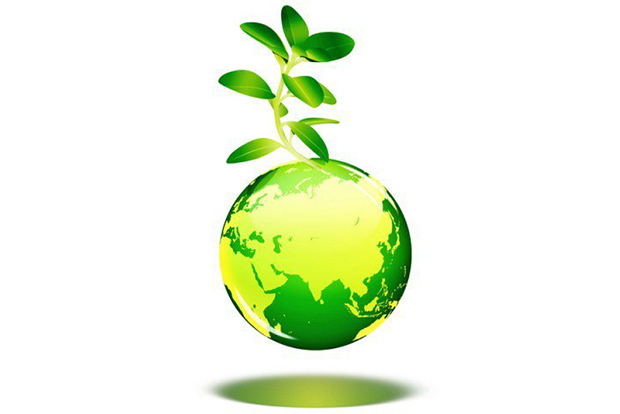
Toxins not only ruin our health through immediate contact, but they also harm our environment. There are several things that you need to consider when you are trying to clean your home with minimal environmental impact. Many cleaners contain chemicals harmful to humans and the environment. Many of these chemicals are categorized as ‘volatile organic compounds’ known as VOCs and can be harmful in different ways. [5] These chemicals include (but are not limited to) phosphorus, ammonia, and nitrogen.
Wastewater containing cleaning products goes down the drain. Then the water is purified to an extent by a treatment plant and released back into the environment. Chemicals that were not removed during the treatment process will make their way to seas, rivers, and lakes. The concentration of these chemicals builds up over time, causing adverse effects on the environment in several ways. The chemicals can be toxic to aquatic life, or they can promote algae growth reducing biodiversity.
Some of these chemicals do not have any set limits in schedule 1 of The Water Supply (Water Quality) Regulations 2016 [6]. Consequently, the levels of these chemicals will not be checked or treated by utility companies, and some will come back to our taps.
Save money, live better
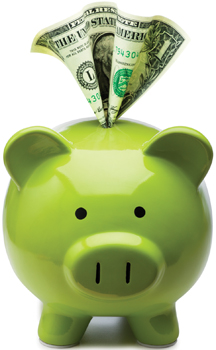
In addition to you being able to pronounce all the ingredients used, you will also save money. DIY cleaning products will cost less. I have limited my cleaning cupboard to the following.
- Unscented Castile soap (£8.48 1L) (can also use ammonia-free unscented eco-friendly dish soap)
- Table Salt (750g £0.35)
- Citric Acid (1 kg £5.12)
- Bicarbonate of Soda ( £8.90 for 2.5kg)
- Vinegar (10L £20.11)
- Hydrogen peroxide 6% (2.5L £9.73)
- Sodium hypochlorite generator
- Organic Essential oil (5.99 10ml)
- Reverse Osmosis water (distilled water)
- Rubbing Alcohol (5L £20.99)
You might think that off the shelf chemicals are essential to clean properly and switching to DIY means more scrubbing for the same result. This is not true. I am including the DIY cleaning product recipes containing simple ingredients, which will do the same job as the shelf products, if not better.
Prices for supplies the supplies listed in the table are used for reference to compare the cost of average off the shelf products and homemade ones. Check out the cost comparison table on the link below.
DIY Eco Cleaning Products Recipes
Glass cleaner
Ingredients:
- 10 ml (1tbs) White vinegar
- 100 ml Rubbing Alcohol
- 100 ml Reverse Osmosis (RO) or Distilled Water
Method:
Simply add all ingredients to a spray bottle and shake well. Spray on the glass and wipe with a cloth.
Tips and precautions:
Do not use on stone or other materials that can react with acids. I found that microfiber cloth works the best for glass.
Bathroom cleaner
Ingredients:
- 200 ml RO water (for short life cleaners can also use tap water)
- 10ml (1 tbs) castile soap
- 10g (1tbs) bicarbonate soda
- 0.5ml (approx. 10 drops) organic essential oil (optional)
Method:
Simply add all ingredients to a spray bottle and shake well. Spray on the glass and wipe with a cloth.
Tips and precautions:
Do not use on stone or other materials that can react with acids. I found that microfiber cloth works the best for glass.
Toilet bombs
Ingredients:
- 240g bicarbonate soda
- 80g citric acid
- 20 ml hydrogen peroxide
- 1ml (approx. 20 drops) essential oil
Method:
Mix baking soda and citric acid together in a suitable size ball, spray peroxide over the mixture, stir the mixture and continue spraying until mixture is damp, add essential oil and mix well. Scoop toilet bombs using a tablespoon or a small ice cream scoop. Carefully place them on a tray lined with grease-proof paper – and leave for a few hours to dry. Once dry – transfer them to a container. Simply drop a bomb into the basin of your toilet when you feel it requires refreshing and leave it to dissolve. Leave for a few minutes, then give the toilet a quick swish with the toilet brush.
Tips and precautions:
Lavender, thieves, rosemary and pine oils work for me.
Carpet cleaner
Ingredients:
- 200 ml RO water (can use tap water for short life cleaner)
- 20 ml (2 tbs) Hydrogen peroxide
- 20 ml (2 tbs) castile soap
Method:
In a spray bottle mix the water, hydrogen peroxide and castile soap. Then use as required.
Desinfectant solution (sodium hypochlorite)
Ingredients and devices:
- Osmio Sanser
- Tap Water
- Table Salt
Method:
Using Osmio Sanser devise generate sodium hypochlorite (tap water and a bit of salt that is all you need).
Bleach (sodium hypochlorite)
- Osmio Sanser 2L
- Tap Water
- Table Salt
Using Osmio Sanser 2L device generate sodium hypochlorite for 30 minutes (tap water and a bit of salt that is all you need)
Safety precautions for all DIY cleaners
- All DIY cleaners and ingredients must be stored away from children and pets. Ingredients are simple, but they can cause harm if spilled or ingested.
- Label all spray bottles – and always refill them with the same cleaners. You must be aware that chemistry happens. The residue of an old cleaning product and new ingredients can react, and you can end up with a possibly toxic chemical.
- Use gloves as usual. As cleaners will have a pH lower or higher than neutral (neutral pH is 7). Contact with the skin can still cause dryness and irritation. Low and high PH – are the main properties enabling cleaning.
References:
- http://www.ukcpi.org/_Assets/customdocs/pdfs/sustainable_cleaning.pdf
- Staples, Charles A.; Weeks, John; Hall, Jerry F.; Naylor, Carter G. (1998). "Evaluation of aquatic toxicity and bioaccumulation of C8- and C9-alkylphenol ethoxylates". Environmental Toxicology and Chemistry.
https://setac.onlinelibrary.wiley.com/doi/full/10.1002/etc.5620171213 - Steinemann, A. C., MacGregor, I. C., Gordon, S. M., Gallagher, L. G., Davis, A. L., Ribeiro, D. S., & Wallace, L. A. (2011). Fragranced consumer products: chemicals emitted, ingredients unlisted. Environmental Impact Assessment Review, 31(3), 328-333.
- William W. Nazaroffa Charles J. Cleaning products and air fresheners: exposure to primary and secondary air pollutants
https://www.sciencedirect.com/science/article/abs/pii/S1352231004002171?via%3Dihub - Fedoruk, Marion J.; Bronstein, Rod; Kerger, Brent D. (November 2005). "Ammonia exposure and hazard assessment for selected household cleaning product uses". Journal of Exposure Science & Environmental Epidemiology. 15 (6): 534–544
544https://www.nature.com/articles/7500431 - https://www.legislation.gov.uk/uksi/2016/614/schedule/1/made

